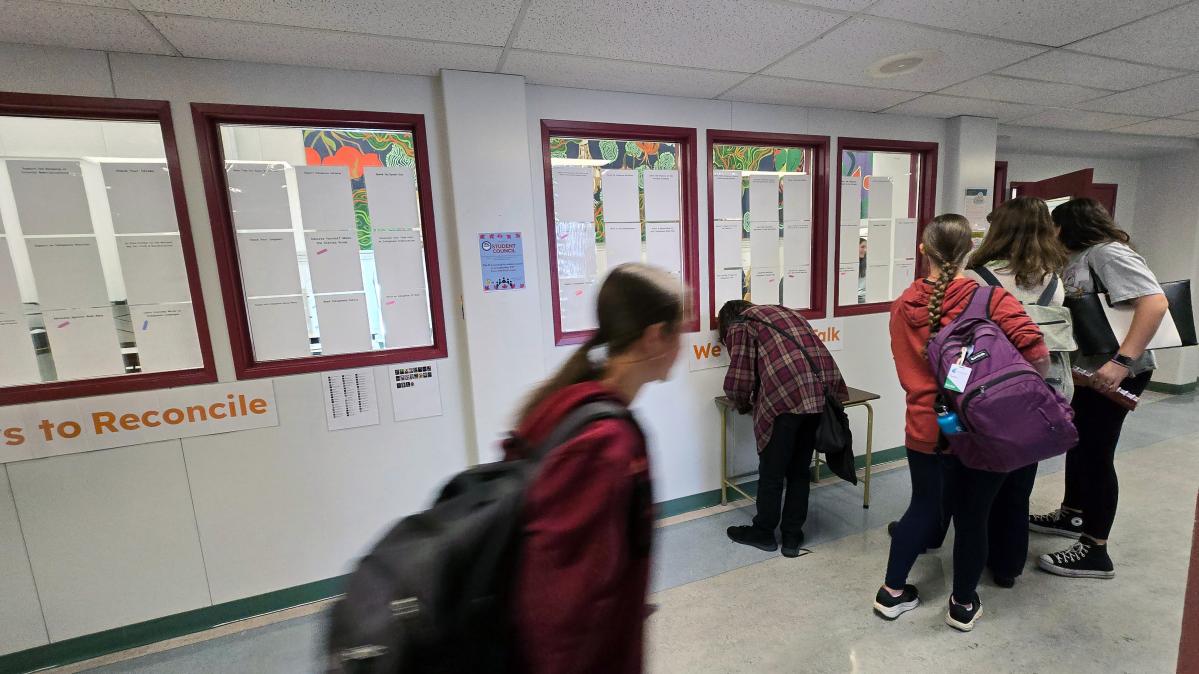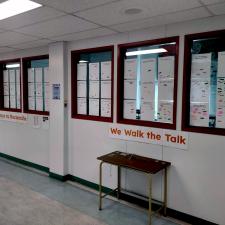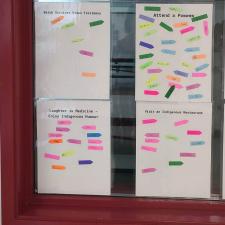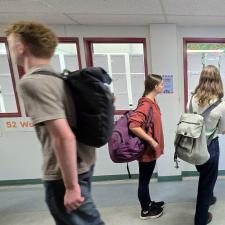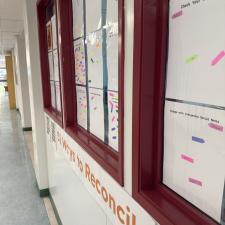“Reconciliation Wall” at LVR to Inspire Action All Year Long
L.V. Rogers Secondary School has unveiled a “reconciliation wall” to mark Orange Shirt Day and the National Day for Truth and Reconciliation on September 30 and to remain as a living feature throughout October and the rest of the school year.
The wall is where students, staff and school visitors can post coloured flags to note acts that foster reconciliation between Indigenous and non-Indigenous peoples. It is modeled on David A. Robertson’s practical guide for non-Indigenous people, 52 Ways to Reconcile: How to Walk with Indigenous Peoples on the Path to Healing. The guide corresponds to the Truth and Reconciliation Commission of Canada’s 94 Calls to Action.
Aboriginal Education Success Teacher Naomi Legg hopes the reconciliation project primes staff and students to post ideas and actions often.
“Wouldn’t it be great to see a thousand actions on the wall? Maybe a class will come over to the wall and say, hey, let's try to take this action as a class or maybe a teacher will come along and be like, that's the one, we're going to work on that as staff.”
Coloured action flags have already been posted under, “Host a Movie Night,” “Check Your Idioms,” “Read Indigenous Comics,” and “Attend a Pow Wow,” and a variety of other ideas from Robertson’s book.
Legg notes that some actions require greater effort, such as reading a series of books on Indigenous history or learning an Indigenous language, and others are easily woven into regular life—adding Indigenous musicians to a playlist, following an Indigenous skateboarding group on social media, or finding an Indigenous recipe online to make food to share with family and friends.
“[Reconciliation] is working. The kids are doing it, internalizing it, normalizing it. And throughout the school year [the wall] gives us a snapshot of where we're at as a group and even as a society.”
Jesse Halton, District Indigenization Coordinator for SD8, sees the wall as a way to help people feel less overwhelmed by the terrible legacy of residential schools for Indigenous peoples.
“These are acts anyone can do, and that they can enjoy doing. What I hope people take away is, don’t worry about making mistakes, just find an action and do it, however big or small, and celebrate it by posting it on the wall!”
Principal Ian Cooper emphasizes that reconciliation happens not only in September and October but is ongoing all year at LVR.
“This wall and Orange Shirt Day are important, but the real work is what our students and staff carry forward every day — creating inclusive classrooms, learning Indigenous histories, and building relationships and deeper knowledge that move us closer to reconciliation.”
He adds, “Many of us may have heard the quote from the late Justice Murray Sinclair who said, ‘Education is what has got into this mess and education is what is going to get us out of it.’ Well, here we are. Let’s go.”
National Day for Truth and Reconciliation and Orange Shirt Day are marked in all schools and worksites in SD8, and flags are lowered each year to half-mast to honour the survivors of residential schools, their families, and communities, and those who never came home.
SD8 has identified Cultural and Identity Development as a key strategic priority, committing to practices that include Indigenous worldviews and ways of knowing across all schools.
Additional quotes about reconciliation from students and staff:
It’s really important because it’s not just about remembering the past, it’s about understanding how it still affects people now. — Student
Reconciliation isn’t just a day — it’s something we need to keep working on all the time. — Student
The assemblies are fantastic learning opportunities for all students and staff. Change may be slow, but you can already see it in what students are putting on these walls. — Teacher
Introducing Indigenous language has been really well received. When students hear people speaking in their own language, they not only understand, they feel a sense of respect and belonging. — Teacher
Reconciliation doesn’t have to be perfect — it just has to be honest. Mistakes are part of learning, and that’s how we move forward together. — Teacher
One of the truly hopeful things I see is with my own kids. They know far more about Indigenous history and culture than I ever did growing up. — Staff/Parent

